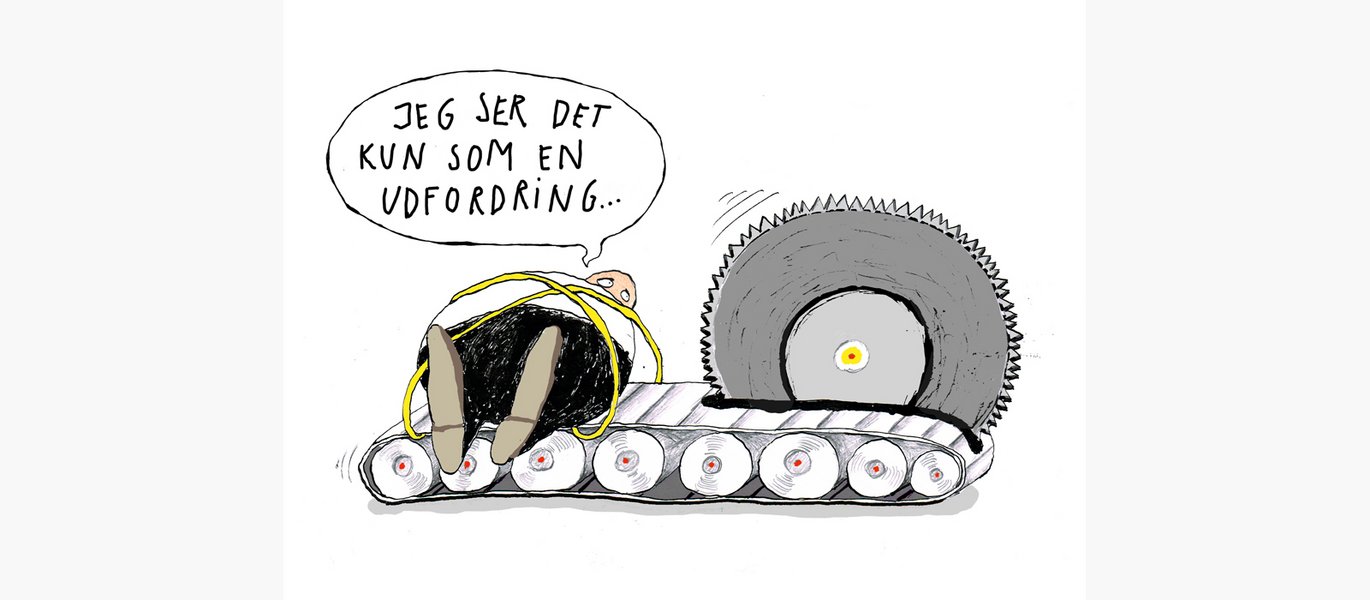Houston, we have a challenge!
By Linda Greve, special consultant and team leader at the AU Centre for Entrepreneurship and Innovation. Co-author of the book “Forandrende ledelseskommunikation: Metaforer i organisationer” (“Management Communication for Change: Metaphors in Organisations”)

“We don’t have problems, we only have challenges.” That’s what people often say (with a certain amount of irony in their voices) when things start getting difficult. But what is the challenge connected with using the word problem, actually? The concepts of challenge and problem are often used interchangeably, with the former generally being used as a euphemism for the latter. But the most interesting thing is how to find solutions.
If we consider the two concepts a little more carefully, it becomes obvious why the rhetoric of management prefers to talk about challenges – but it also becomes clear that problems cannot simply be ignored.
Greek origins
A quick look in the dictionary helps us to distinguish between the two concepts. The word problem comes from the Greek proballein, which means “to throw before or put forward”. And according to the Danish dictionary, problems are “significant, unresolved issues that need to be considered with the help of analysis or careful thought”.
The same dictionary defines challenges as “tasks that make (intellectual and creative) demands on us”.
In the past, challenges used to be issued in connection with duels. Accepting a challenge was associated with heroism, which still might not be a bad way to describe people who accept challenges in these days of radical change. But in modern parlance challenges are less heroic and yet also different from the definition of problems in one vital respect: problems are unresolved issues that require analysis, while challenges involve concrete tasks. They both make intellectual demands on us, but challenges are much more concrete than problems.
Boss words
Like the term challenge, the expression “Content is King” has become a boss (buzz) word in management rhetoric. But in this particular context it is entirely suitable, because the content and context of the two words problem and challenge undoubtedly determine how they should be interpreted.
A search in KorpusDK on Ordnet.dk reveals that the two words are also used in connection with other words in Danish, and it becomes clear why the word challenge comes across as a more positive concept than problem.
The word problem is often used in connection with words like unsolved, urgent, mounting up, outstanding, insoluble and overwhelming. These are all relatively negative terms. The terms associated with the word challenge have far more positive connotations: future, ethical, exciting, real, major, new and encounter.
So a challenge is exciting and real, whereas a problem is unsolved, urgent, insoluble and overwhelming. And this is the reason why management rhetoric is keen to focus on challenges rather than on problems.
The problem with challenges
The reason why I think we should talk about problems when we need to change, develop and adapt things is based on our modern definition of the term problem. Problems require analysis and thought. You need to think them through carefully. Not necessarily with your eyes fixed firmly on a goal – in fact, it’s often better to focus purely on the problem itself.
Instead of solving our challenges and performing tasks at high speed, regarding them as “real, exciting and major”, I think we should be more analytical about our problems and accept that they require careful thought, a certain amount of time, and an inquiring frame of mind.
If we are prepared to consider our problems more carefully, we will also improve the other side of the problem/challenge coin: solutions. Whereas challenges call for solutions that are also “real, exciting and major”, problems require that we look beyond the obvious and consider the “urgent, overwhelming and insoluble” aspects of life. Challenges call for rapid success, while problems demand innovative thought. If “problems” are to compete with “challenges” in terms of experiencing success based on rapid solutions, they need to enjoy a renaissance as a phenomenon. At least whenever the solutions need to be more than standard solutions to standard problems.

